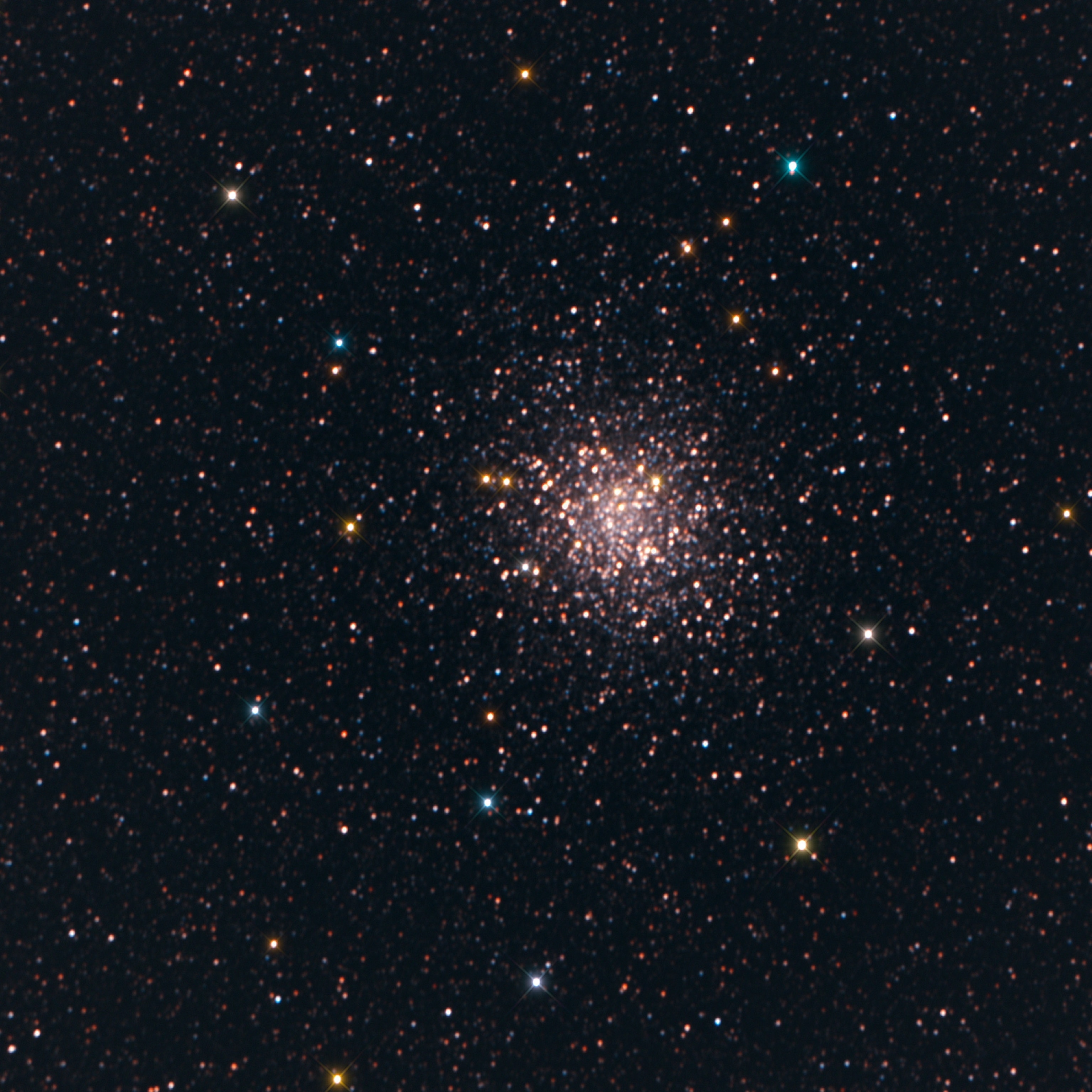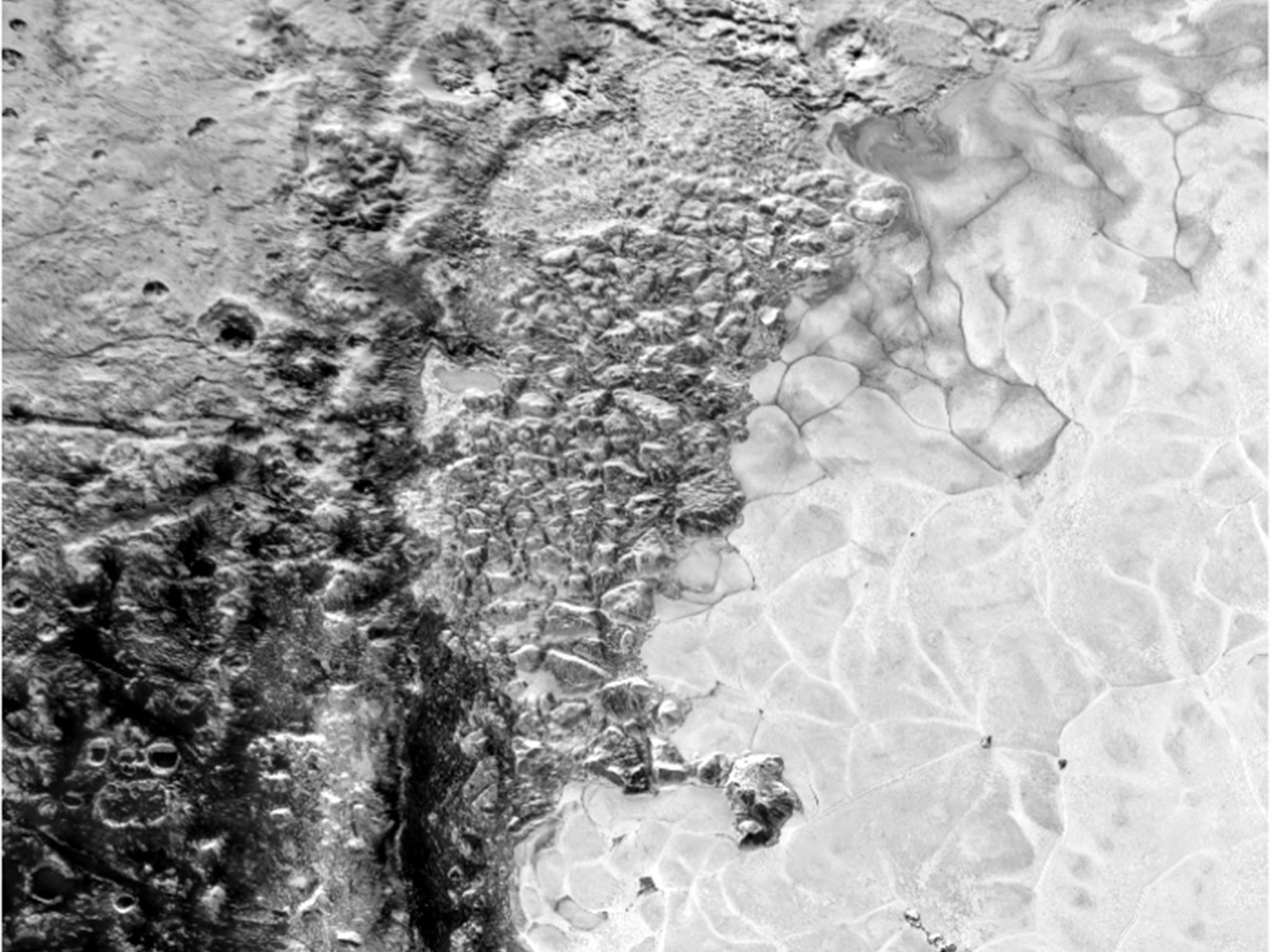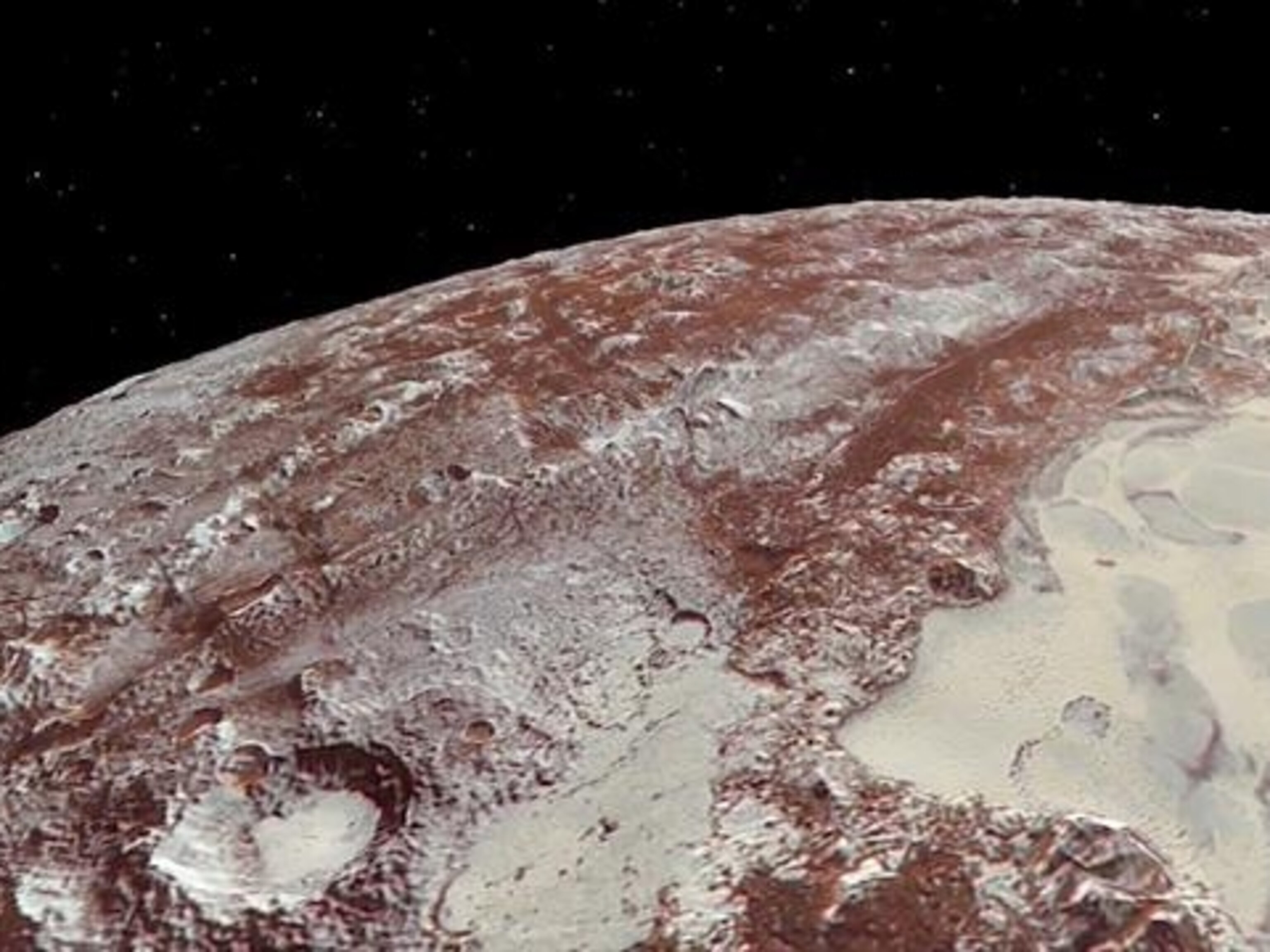
New Pluto Photos Show ‘Astoundingly Amazing’ Landscape
More images from this week's New Horizons mission are forcing scientists to rethink how icy worlds work.
New images from the New Horizons spacecraft's close encounter with Pluto this week show the dwarf planet emerging in wonderfully perplexing detail.
“I’m still having to remind myself to take deep breaths,” Jeff Moore of NASA’s Ames Research Center said Friday, when NASA released several new pictures from Tuesday's Pluto flyby. "This landscape is just astoundingly amazing.”
One new image shows a curiously young terrain marked by smooth, icy plains that’s north of a spiky mountain range revealed earlier in the week. Another piece of data shows an unexplained clump of carbon monoxide ice clustered over the left ventricle of the smooth, heart-shaped patch on Pluto’s face.
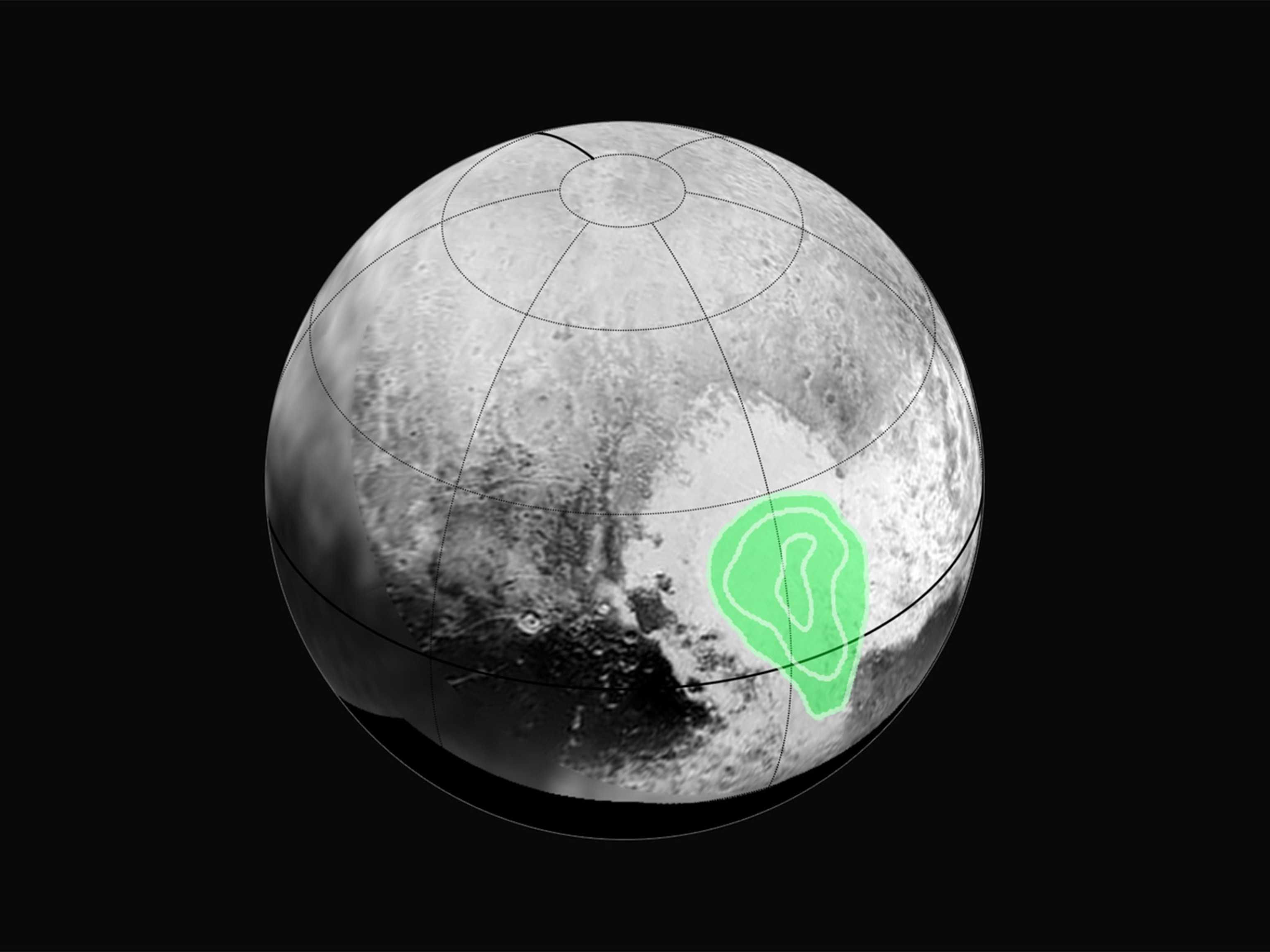
There’s also a new photo of Nix, one of Pluto’s small, tumbling, potato-shaped moons.
Now, with Pluto already more than 2 million miles in its rearview mirror, New Horizons is sailing into the Kuiper Belt, a donut-shaped debris field outside the orbit of Neptune that’s filled with countless icy worlds. It will continue sending data from its Pluto encounter for the next 16 months.
Those observations will include information about the dwarf planet’s atmosphere and composition, plus more views of its surface features.
“I’m a little biased, but I think the solar system saved the best for last,” New Horizons principal investigator Alan Stern told reporters on Friday.
Rethinking Icy Worlds
After a 9-and-a-half-year, 3 billion-mile journey, New Horizons flew through the Pluto system—the planet and its moons—on Tuesday. It was a fleeting encounter, with the craft furiously gathering data as it sped past the frosted dwarf at 31,000 miles per hour.
Earlier images from New Horizons revealed a multi-colored world with a large, bright heart-shaped region called Tombaugh Regio, in honor of Pluto’s discoverer. The heart is hugged on either side by dark splotches.
Most strikingly, the planet’s youthful-looking surface is surprisingly craterless, suggesting a complex geological history. That observation, along with a similarly young surface on Pluto’s large moon Charon, is challenging ideas about how icy worlds maintain their internal heat, previously thought to require some help from a nearby giant planet’s gravity.
“Could icy worlds minding their own business—not orbiting some giant planet—also be geologically active? The answer is obviously yes,” says Moore. “Pluto is every bit as geologically active as any place we’ve seen anyplace else in the solar system.”
Covered in a thin veneer of exotic frost, Pluto is home to many varied terrains. Scientists have already released an image showing icy mountains punching through that frost and rising as high as 11,000 feet. Next to those mountains (now called Norgay Montes in honor of Nepalese Sherpa Tenzing Norgay) is a region of smooth, icy plains that are occasionally interrupted by networks of polygonal fractures and oddly bumpy hills.
“When I saw this image the first time, I decided I was going to call it ‘not easy to explain terrain’,” Moore says. “This could be only a week old for all we know.”
Within those plains, called Sputnik Planum, are darkish spots that could be tantalizing evidence of geysers erupting from Pluto’s surface. It wouldn’t be the first time such geysers have been seen: When the Voyager spacecraft flew by Neptune in 1989, it spotted similarly dark fountains on Neptune’s large moon Triton.
But it’s too soon to say what those spots actually are.
“We are in the most preliminary stages of our investigations,” Moore says. “We are acutely aware that jumping to conclusions comes with great peril.”
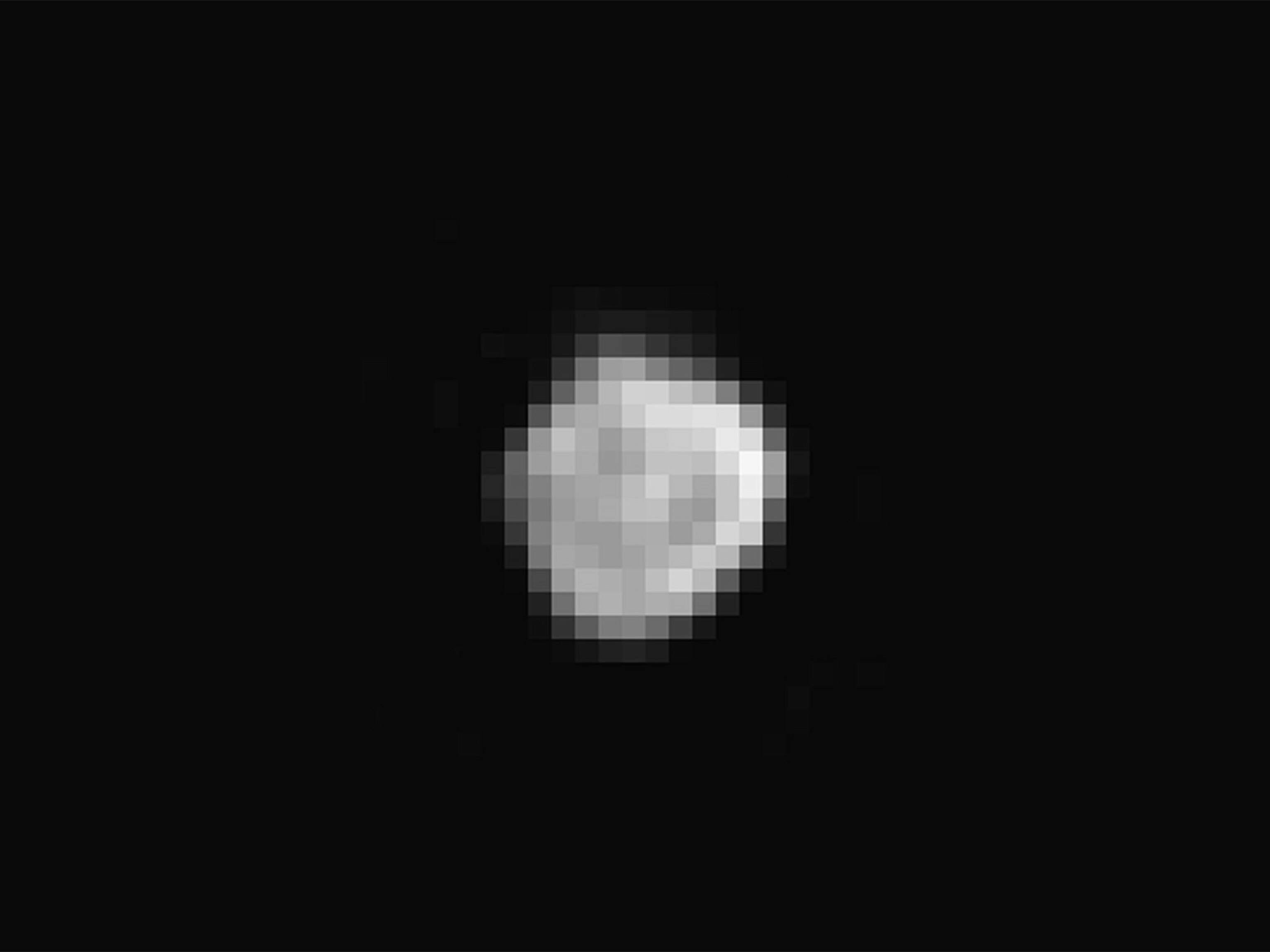
Carried Away by Solar Wind
Other observations discussed by NASA on Friday include data on how Pluto’s atmosphere behaves. “The atmosphere is very symmetric on opposite sides of the planet,” said New Horizons team member Randy Gladstone, of the Southwest Research Institute.
Scientists didn’t know Pluto had an atmosphere until 1988, and since then have been trying to understand how the planet’s puffy shroud evolves over the world’s 248-year trip around the sun.
Early theories suggested the atmosphere would freeze out and collapse as Pluto got farther and farther from the sun. But so far, that doesn’t appear to be happening. Preliminary data suggests that it’s more of a sluggish, stagnant shroud than a roiling, turbulent cloud.
“A glimpse of the data eliminates some models that were contenders up until now,” says Gladstone.
Like Earth’s atmosphere, Pluto’s is primarily made of nitrogen, though there are also layers of methane and heavier hydrocarbons. It is less dense but more voluminous than Earth’s, rising about 1,000 miles (1,600 kilometers) above the planet's surface. The bulk of Earth's atmosphere, in contrast, is concentrated in a veil just 60 miles thick (100 kilometers).
And unlike Earth's atmosphere, Pluto's is escaping—or wafting into space. In fact, the New Horizons began detecting nitrogen atoms from Pluto’s atmosphere five days earlier than anticipated.“That nitrogen atmosphere, because Pluto is so small, escapes directly into space,” says team member Fran Bagenal of the University of Colorado, Boulder.
Now, New Horizons has detected a long tail of charged particles streaming off of Pluto that have “been pulled away and carried away by the solar wind,” Bagenal says. Calculations suggest Pluto loses as much as 500 tons of nitrogen per hour, meaning it has lost as much as 9,000 feet of nitrogen over the course of its 4.6 billion-year history, Bagenal says. “That’s a substantial mountain of nitrogen ice that’s been removed.”
Follow Nadia Drake on Twitter and on her blog at National Geographic's Phenomena.



